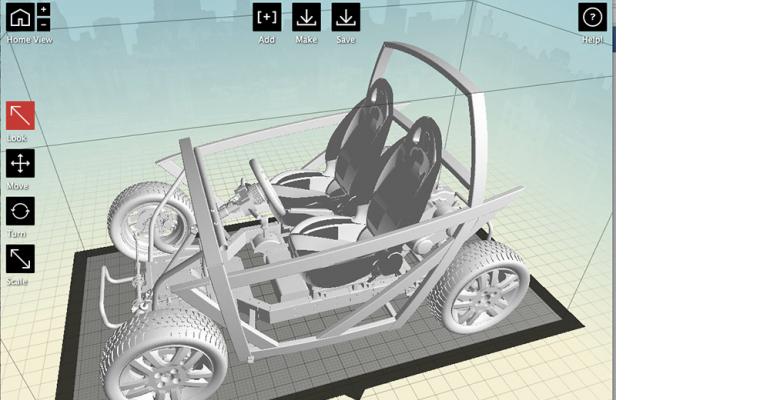MILAN, Italy – An Italian-Chinese company is attempting to re-create the do-it-yourself allure of Swedish retailer IKEA in the automobile market by offering a production system for assembling a customized modular car.
Based in Hong Kong with an R&D center in Busto Arsizio, Italy, OSVehicle is developing the Urban TABBY, a platform with the key components for making a finished car that is legal to drive on European Union roads.
OSVehicle’s owners say the Urban TABBY will come with all major parts of a finished car, including the chassis, wheels, seats with safety belts, powertrain (with choice of three engines: electric, hybrid and internal-combustion), a brake and suspension system and body frame.
All parts will be standardized and homologated, with the only missing components pertaining to the body of the finished car, which customers are encouraged to design and produce themselves.
“We expect that a finished, road-legal vehicle built on the homologated Urban TABBY vehicle platform to cost approximately €6,000 ($7,710),” Tin Hang Liu, marketing director and co-founder of OSVehicle, tells WardsAuto. “We calculate that, in addition to the costs of the Urban TABBY kit, the custom design and production of the car’s body should cost about €2,000 ($2,540).”
The Urban TABBY is an extension of OSVehicle’s first product, a universal, modular chassis called TABBY that can be assembled in less than an hour. TABBY consists only of the chassis and braking and suspension system, although the company sells components such as seats, wheels and an electric powertrain as options.
It also lacks key components such as the car body, which must be sourced by purchasers following design guidelines issued by OSVehicle. The company recommends the use of new technologies, such as 3-D printing, to make some elements of the finished vehicle.
The Urban TABBY also is customizable, with buyers encouraged to modify it to fit their specific needs through the use of conventional or new technologies, again including 3-D printing.
To promote innovation, OSVehicle allows customers to download, for free, the 3-D design specs of the Urban TABBY on the company website (www.osvehicle.com) with a Creative Commons license.
In addition to individual buyers, OSVehicle claims the Urban TABBY could attract automakers looking for low-cost ways of establishing assembly operations in smaller emerging markets. “A simple and durable kit for the African market is one of our ongoing projects,” he notes.
“Urban TABBY was designed to enable new startups in the automotive industry, offering a standardized and homologated car platform that can be easily assembled and customizable,” Liu says.
Uncomplicated production, the ability to customize and sustainable manufacturing methods with low overhead are among the strengths of the product, Liu contends. As a modular base for vehicles, he says, the Urban TABBY design “translates into easy maintenance and no special tools required for the assembly of the vehicles. It’s a huge advantage compared to the closed approach of the current players.
“Both small and large manufacturers have expressed interest in creating vehicles on our platform,” Liu says. “We are definitely targeting the (business-to-business) market as well as the individual consumers.”
The OSVehicle platform also can lower logistics, shipping and warehousing costs by shipping components to production locations, he says: “Emerging markets have huge import taxes for complete vehicles. By shipping components and having the body manufactured locally, we create local jobs and skills. Sustainable and affordable are the two key factors in emerging markets.”
OSVehicle’s owners claim their creation is not a kit but instead is the first point of contact between the world of information technology and the automotive industry. “It’s the first open-source hardware framework on four wheels,” Liu says.
To be able to legally drive a finished car built on the Urban TABBY platform in the EU, customers will need a homologation extension or a permit costing €500 ($630).
“It’s a simple process, since all parts in the Urban TABBY kit are homologated and the kit contains an easy step-by-step guide to getting the extension, along with the assembly instructions and complete car specs,” Liu says.
However, Steven Malpass, director at Blitzworld, the U.K.’s largest manufacturer of on- and off-road buggies, noted that while the OSVehicle platform could be a competitive alternative in developing countries, many of these countries may not be ready for an electric-powered vehicle just yet: “I’m not sure if you'd easily find a charging station for your electric quad in the African outback.”
Urban TABBY bears clear similarities to the established do-it-yourself car-assembly market, which is especially popular in the U.K.
Ian Stent, editor of Complete Kit Car magazine, tells WardsAuto he has never seen anything like the OSVehicle platform before.
The Urban TABBY “could fly with a diehard bloke that wants to build his own, but the majority of these guys, in the U.K. at least, want to build sports cars, not quads or buggies,” Stent says, noting the region’s annual sales of road-legal kit cars – mostly sports cars – are estimated at 15,000 to 25,000 models.
Malpass acknowledges the electric version could find a market in China, where the demand for electric vehicles is expected to soar in coming years, but also suggests the OSVehicle platform ultimately might prove more expensive than competitors already in that market.





